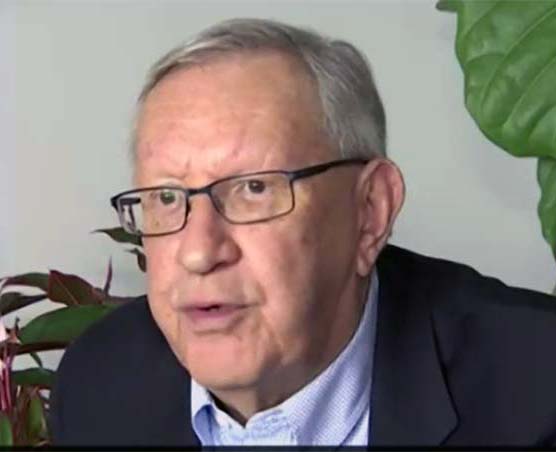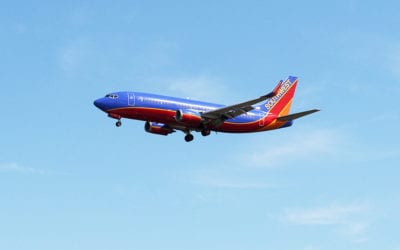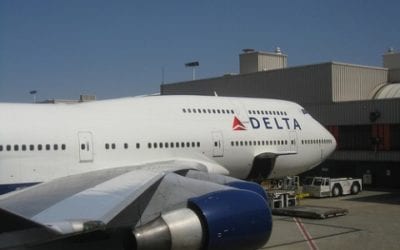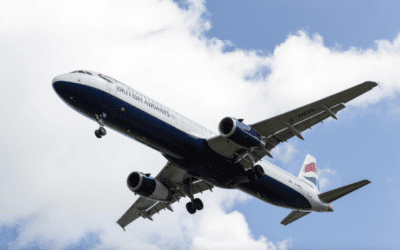
After more analysis, the Senate Aviation Subcommittee hearings and the release of the GAO report on “Issues raised by the Proposed Merger of American Airlines and US Airways” the consumer case against the merger of American Airlines and US Airways is stronger than ever. When all is said and done, the determination of the Department of Justice (DOJ) on whether this merger raises antitrust concerns is critical.
With this merger, consumers gain no significant benefits in terms of new destinations, savings or merger synergies. Consumers face a significant, nationwide loss of competition that will affect airport pairs in 38 of 50 states.
According to the GAO study the five factors considered by DOJ under Horizontal Merger Guidelines (Washington, D.C., rev. Aug. 19, 2010) are:
• the relevant product and geographic markets in which the companies operate and whether the merger is likely to significantly increase concentration in those markets, which in the case of airlines principally applies to city-pair markets;
• the extent of potential adverse competitive effects of the merger, such as whether the merged entity will be able to charge higher prices or restrict output for the product or service it sells;
• whether other competitors are likely to enter the affected markets and whether they would counteract any potential anticompetitive effects that the merger might have posed;
• the verified “merger specific” efficiencies or other competitive benefits that may be generated by the merger and that cannot be obtained through any other means; and
• whether, absent the merger or acquisition, one of the firms is likely to fail, causing its assets to exit the market.
This Consumer Travel Alliance (CTA) analysis will look at each of these areas. Plus, because of the far-reaching loss of competition, the legacy airlines (American, Delta, United, US Airways) practice of price signaling, tacit coordination and the lockstep actions of these legacy airlines in terms of obscuring fees and changing them in concert, this merger should be examined based on coordinated effects — this merger clearly increases the probability that, post merger, the merging airlines and their competitors will be able to coordinate their behaviour in an anticompetitive way.
Other mergers were consummated during a period of financial distress within the airline marketplace. They involved airlines which were losing hundreds of millions of dollars a year and that faced the real possibility of failing and exacerbating the country’s economic and unemployment crisis. There were some consumer benefits for the overall economy to offset the loss of competition.
Also, according to Horizontal Merger Guidelines (Washington, D.C., rev. Aug. 19, 2010), as noted in the GAO report,
“the greater the potential anticompetitive effects, the greater the offsetting verifiable efficiencies for DOJ to clear a merger must be. However, according to the Guidelines, efficiencies almost never justify a merger if it would create a monopoly or near monopoly.”
Looking at this merger from the DOJ point of view, seems to make an objection to this corporate marriage the natural call. Neither airline petitioning for a merger is in a financial crisis; in fact, both have recently reported record profits. This merger does nothing for consumers other than potentially harming them by slashing competition with no discernible benefits nor benefits to the overall economy.
Will this merger significantly increase concentration in city-pair markets?
Yes. Any analysis of this merger that only takes into account overlapping nonstop routes is not completed based on how hub-and-spoke system operate. These airline creations are based on maximizing revenue and reach through connecting flights through strong hubs. The analysis must take into account overlapping connecting routes as well.
The GAO report examined overlapping connecting routes as well as non-stop routes report reveals a widespread, nationwide loss of competition “in 1,665 airport pair markets affecting more than 53 million passengers.”
The study goes on to show that this loss of competition on overlapping connecting routes between airport pair would be more than 30 percent more widespread than the previous UA/CO merger.
A similar overlapping connecting route study by the CTA exposed the massive loss of competition in a study sent to the Department of Justice (DOJ) months before the release of the GAO study.
Will the merged entity will be able to charge higher prices or restrict output for the product or service it sells?
Yes.
Based on the way that legacy airlines make airfare-increase decisions through signaling, having only three rather than four major network airline competition. Moreover, the legacy carriers now have another significant revenue stream that must be taken into account in any merger analysis, ancillary fees. The legacy carriers’ actions during these merger deliberations when they moved in virtual concert to raise change fees from $150 to $200 within three days of each other demonstrates what consumers may face in the future. These increases were made without any change in the status quo or the market. The airlines raised these fees because they could and gave consumers no opportunity to “vote with their wallets.”
In testimony before the Senate Judiciary Committee’s Subcommittee on Antitrust, Competition Policy and Consumer Rights, Diana Moss, VP, American Antitrust Institute, said that post-merger, “Fare increases are above average at the origin airport on 70 percent of routes affected by DeltaNorthwest and on over 90 percent of routes affected by UnitedContinental.” There is no reason to expect otherwise with this merger.
When examined through the lense of overlapping connecting routes, the amount and the nationwide breath of damage caused by this merger to the competitive airscape is dramatic. The elimination of competition in terms of market pairs has never been this extreme. This AA/US merger involves 31+ percent more loss of competition on overlapping competitive routes than the United/Continental merger.
Finally, the entire object for the normal merger for struggling companies is to create efficiencies where possible. These kinds of efficiencies most likely come from trimming overlapping routes to “right size” them. This would be most possible between the 1,665 overlapping airport pairs identified by the GAO study.
Airport pairs such as Seattle-Austin might see a cutback in service as the New American Airlines entity streamlines their service from a combined seven connecting flights a day to, perhaps, six. A CTA study showed that 47 airport pairs currently have 40 to 10 overlapping connecting flights. The airlines set their schedules to optimize their profits, and to maintain competitive positions. Without competition, service is likely to be reduced especially at these airports.
In case of a merger approval, these airports also face the greatest threat of layoffs of support personnel as the airlines consolidate their local operations and break contracts with local airport support providers as they merge overlapping operations.
Plus, over the past years, US Airways has been the low cost leader, a maverick if you will, among the legacy carriers. They strove to offer the lowest prices in every market they served. Consumers are going to lose one of the most aggressive price competitors in the industry.
One other competition point of view is capacity. The airlines have been touting their “discipline” when it comes to capacity. This is another form of competition. Went airlines reduce capacity in concert (though there are no outward signs of coordination) it serves to keep the ability to raise prices. This kind of coordinated effect is perhaps just as pernicious as increases in airfares.
Will other competitors be likely to enter the affected markets and will they counteract any potential anticompetitive effects that the merger might pose?
The actions of competitors moving into affected airport pair service is questionable. This is one of the “possibles” that has to be measured against the overall consumer benefits of this merger.
What are the verified “merger specific” efficiencies or other competitive benefits that may be generated by the merger and that cannot be obtained through any other means?
None that the Consumer Travel Alliance can perceive.
The enlarged network claims made by AA/US in support of this merger does not take into account the loss of network that will ensue when US Airways ceases its code-share and frequent flier cooperation with United Airlines. Yes, American Airlines passengers may gain additional routes through the merger with US Airways, but US Airways passengers will lose destinations and frequent flier mileage earning opportunities with this merger. On a net basis there is no overall consumer benefit, perhaps a loss of destinations for US Airways passengers. What this merger gives with one hand, it takes away with the other.
The airline fleets of these merger partners are not compatible. US Airways flies the largest fleet of Airbus aircraft in the world. American Airlines is almost entirely a Boeing aircraft fleet. The need for duplication of maintenance services provides no synergies and signals possible problems.
These two airlines have separate IT and reservation systems. Their integration means more problems for consumers. History of other mergers — Delta/Northwest, Continental/United, Southwest/AirTran — shows that consumers bear the brunt of the integration of these complex computer systems. The harm to consumers has been widely reported related to the first two mergers noted here. The Southwest/AirTran merger has been forced to move more slowly because of IT difficulties.
Labor peace that has been touted by the CEOs of AA and USAirways is already unraveling. The pilots’ unions still do not have merged seniority lists from the previous America West/US Airways merger after eight years. The flight attendants are already faced with unrest from former TWA flight attendants and the AFA is more than likely going to launch a takeover of the union representation from APFA as soon as the merger is finalized. The machinists are already engaged in a takeover battle. American Eagle pilots have rejected their contract and are still in negotiations. This labor peace is only a desire of the AA unions to get out from under their current AA management. Combining the disparate unions will be a mammoth project and promises to be disruptive if history can be used as a guide.
Jim Compton, COO of United Continental Holdings confessed that their recent merger over the first two years created dis-synergies. (See attached Leocha Testimony before the Senate Commerce Committee.)
Absent the merger or acquisition, is one of the firms is likely to fail, causing its assets to exit the market.
No. Both airline CEOs have stated during congressional hearings that their airlines can stand on their own. There is no current danger of these two airlines failing.
Will a cutback of slots at Washington-Reagan Airport (DCA) provide an adequate remedy to the overall loss of competition that will result from this merger?
No.
Slot cutbacks at DCA and LGA are regional in nature and cannot mitigate the overall loss of competition. The loss of competition from Boston and Bradley to Los Angeles and San Diego as well as scores of other airport pairs created a nationwide loss of competition.
Conclusion:
• Neither airline is in need of this merger for survival.
• This merger cannot demonstrate any verifiable efficiencies or consumer benefits.
• Claimed future oneworld network enhancements are mitigated by loss of current Star Alliance network benefits.
• Nationwide, competition will suffer significantly, more than in any previous merger.
• At airport served by overlapping competitive routes in 38 of 50 states consumers will have less choice as service is “rationalized.”
• Slot divestitures at DCA and LGA will not solve the endemic loss of competition.
• No other structural remedies are available to avoid the reduction of domestic competition that this merger will create.
DOJ should block this merger from being consummated as it did when it objected to the proposed merger of United Airlines and US Airways back in 2001. This merger will violate antitrust laws by reducing competition, increasing airfares and fees, and harming consumers on airline routes throughout the United States.

Charlie Leocha is the President of Travelers United. He has been working in Washington, DC, for the past 14 years with Congress, the Department of Transportation, and industry stakeholders on travel issues. He was the first consumer representative to the Advisory Committee for Aviation Consumer Protections appointed by the Secretary of Transportation from 2012 through 2018.



